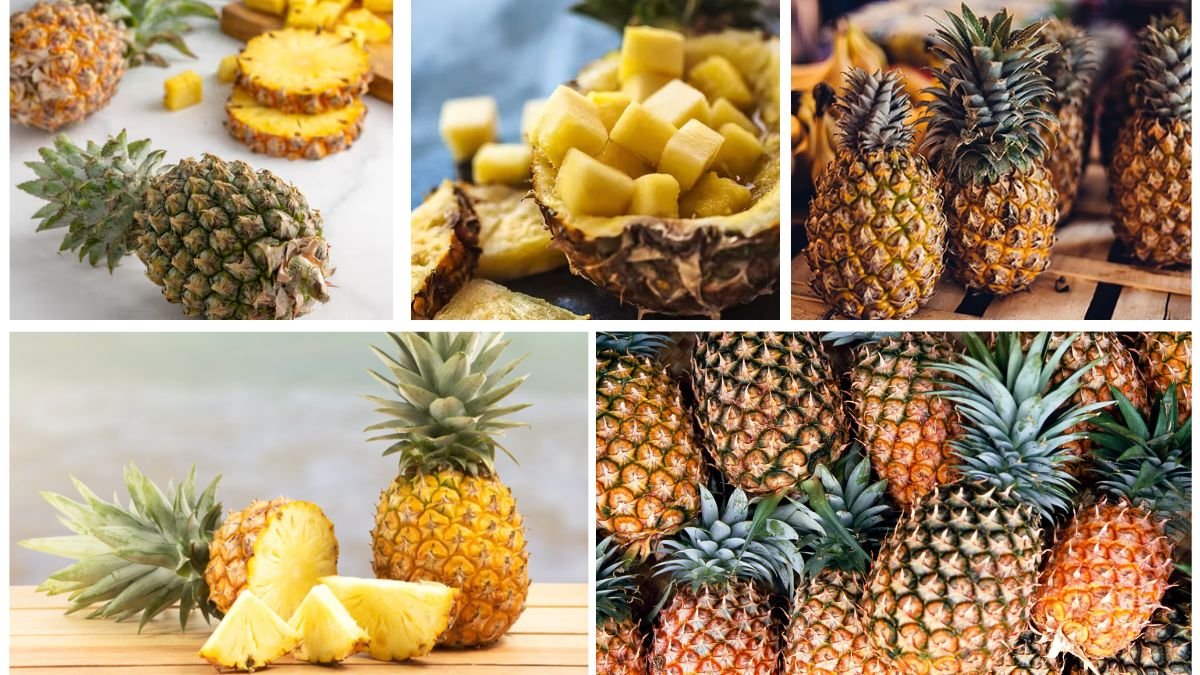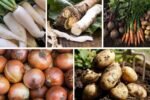Pineapple (Ananas comosus), with its tropical sweetness, vibrant flavor, and nutritional richness, is one of the most popular fruits worldwide. Celebrated for its culinary versatility, health benefits, and cultural significance, pineapple cultivation spans tropical and subtropical regions.
But among all producing nations, which country produces the most pineapples globally? The answer is Costa Rica, a country whose ideal climate, large-scale plantations, and export-oriented agriculture make it the global leader in pineapple production. This article explores Costa Rica’s dominance, other major producers, global trade, and the fruit’s nutritional, cultural, and economic significance.
Understanding Pineapples

Pineapple is a tropical fruit that grows on a perennial plant close to the ground. Its key features include:
- Appearance: Rough, spiky exterior with golden-yellow sweet flesh inside.
- Flavor: Sweet, tangy, and tropical, making it ideal for fresh consumption, cooking, and beverages.
- Varieties: Popular varieties include Smooth Cayenne, Queen, Red Spanish, and MD2.
- Uses: Eaten fresh, canned, juiced, grilled, or incorporated into desserts, salads, and savory dishes.
- Nutritional Benefits: Rich in vitamin C, manganese, dietary fiber, antioxidants, and bromelain enzyme.
- Health Benefits: Supports digestion, boosts immunity, promotes bone health, reduces inflammation, and improves skin health.
Pineapple plants thrive in tropical climates with warm temperatures, high humidity, well-drained soil, and consistent rainfall. Each plant produces a single fruit at a time, taking roughly 18–24 months to mature in traditional cultivation, though modern techniques can shorten this cycle.
Costa Rica: The Global Leader in Pineapple Production

Production Scale
Costa Rica is the largest pineapple producer worldwide, responsible for over 15% of global pineapple output. According to the Food and Agriculture Organization (FAO), Costa Rica produces over 3 million metric tons of pineapples annually, primarily for export.
Factors Behind Costa Rica’s Dominance
- Ideal Climate and Geography
Costa Rica’s tropical climate, with consistent warmth, high rainfall, and fertile volcanic soils, provides perfect conditions for pineapple cultivation. Key growing regions include Puntarenas, Guanacaste, and Alajuela. - Extensive Cultivation Areas
Costa Rica has large-scale plantations covering over 30,000 hectares, many operated by commercial companies focused on export production. - Varietal Selection
Costa Rica predominantly grows the MD2 variety, favored for its uniform sweetness, lower acidity, longer shelf life, and export suitability. Other varieties include Queen and Smooth Cayenne. - Advanced Agricultural Practices
Costa Rican growers use drip irrigation, fertigation, integrated pest management, and careful pruning to maximize yield, improve fruit quality, and reduce environmental impact. - Export-Oriented Production
Over 80% of Costa Rica’s pineapples are exported, making it the world’s largest pineapple exporter. Key markets include the United States, Europe, and Asia, with fresh fruit and processed products like juice and canned pineapple in high demand.
Other Major Pineapple Producers

While Costa Rica leads, several other countries contribute significantly to global pineapple production:
1. Philippines
- Annual Production: Approximately 2.5–3 million metric tons.
- Highlights: Pineapple cultivation is mainly in Mindanao; Dole Philippines and local farmers produce both fresh fruit and processed products for domestic use and export.
2. Thailand
- Annual Production: Around 2.0–2.2 million metric tons.
- Highlights: Known for sweet pineapple varieties like Queen and Pattavia; production is both for domestic consumption and export, particularly canned pineapple.
3. Indonesia
- Annual Production: Approximately 1.5–2 million metric tons.
- Highlights: Cultivates Smooth Cayenne and local varieties; used for fresh consumption, juice, and processing.
4. India
- Annual Production: Roughly 1.3–1.5 million metric tons.
- Highlights: Major growing regions include West Bengal, Kerala, and Karnataka; mostly consumed domestically, with limited exports.
5. Other Countries
- Brazil, Kenya, Nigeria, and Mexico produce pineapples on a smaller scale for domestic markets and regional trade.
Global Pineapple Market and Trade

Pineapple is a high-demand commodity in international trade:
- Costa Rica: Dominates global exports, supplying over 50% of the world’s pineapple exports, mainly to the United States and Europe.
- Philippines and Thailand: Supply canned and fresh pineapples to Asia, the Middle East, and Europe.
- Indonesia, India, and Brazil: Focus on domestic consumption and regional trade.
- Global Trends: Growing demand for tropical fruits, fresh produce, canned fruit, and pineapple-based beverages drives the international market.
Modern logistics, refrigeration, and air freight have made it possible to ship fresh pineapples worldwide, extending market reach.
Nutritional and Health Benefits of Pineapple

Pineapples are nutrient-dense and provide multiple health benefits:
- Vitamin C: Strengthens immunity, promotes collagen synthesis, and acts as a potent antioxidant.
- Manganese: Supports bone health and metabolism.
- Bromelain: Natural enzyme aiding digestion and reducing inflammation.
- Dietary Fiber: Promotes digestive health and prevents constipation.
- Low in Calories: Ideal for weight management and healthy snacking.
- Antioxidants: Combat free radicals and support overall wellness.
Regular consumption of pineapple—fresh, juiced, or cooked—supports immunity, digestion, cardiovascular health, and skin vitality.
Culinary and Cultural Significance
Pineapple is celebrated globally for its culinary versatility:
- Costa Rica: Fresh pineapples are exported widely; used in fruit salads, beverages, and desserts.
- Philippines and Thailand: Popular for fresh consumption, canned pineapple, juices, and desserts.
- India: Eaten fresh, in desserts, chutneys, and savory dishes.
- Global Trend: Pineapples are used in tropical fruit platters, smoothies, cakes, cocktails, and culinary fusion dishes.
Culturally, pineapple symbolizes hospitality, prosperity, and tropical abundance in many regions.
Challenges in Pineapple Cultivation
Despite its resilience, pineapple production faces several challenges:
- Climate Sensitivity
Extreme heat, storms, drought, or heavy rainfall can affect flowering and fruit quality. - Pests and Diseases
Fruit flies, mealybugs, nematodes, and fungal infections threaten yields. - Labor Requirements
Harvesting pineapples is labor-intensive, requiring careful handling to avoid bruising and maintain export quality. - Market Volatility
Global pineapple prices fluctuate based on supply, demand, and competition from major exporters.
Costa Rica and other producers mitigate these challenges with modern agronomic practices, pest control, irrigation systems, and improved planting materials.
The Future of Pineapple Production
- Growing Global Demand
Increasing awareness of tropical fruits, healthy diets, and exotic culinary trends drives demand for pineapples. - Value-Added Products
Juice, canned pineapple, dried fruit, jams, and pineapple-based beverages enhance profitability and market reach. - Technological Advancements
Improved irrigation, fertigation, pest management, and selective breeding are boosting yields and fruit quality. - Emerging Producers
Africa, South America, and Asia are expanding pineapple cultivation to meet rising global demand.
Final Thoughts
So, which country is the largest pineapple producer globally? The answer is Costa Rica, producing over 3 million metric tons annually and supplying the majority of the world’s export market.
Other significant producers include the Philippines, Thailand, Indonesia, and India, while emerging regions in Africa and South America are expanding pineapple cultivation.
With its tropical sweetness, nutritional richness, and culinary versatility, pineapple continues to be a beloved fruit worldwide. Costa Rica’s leadership ensures that pineapples remain readily available across the globe, from fresh consumption to juice, canned fruit, and exotic recipes, solidifying its status as the world’s top pineapple producer.





